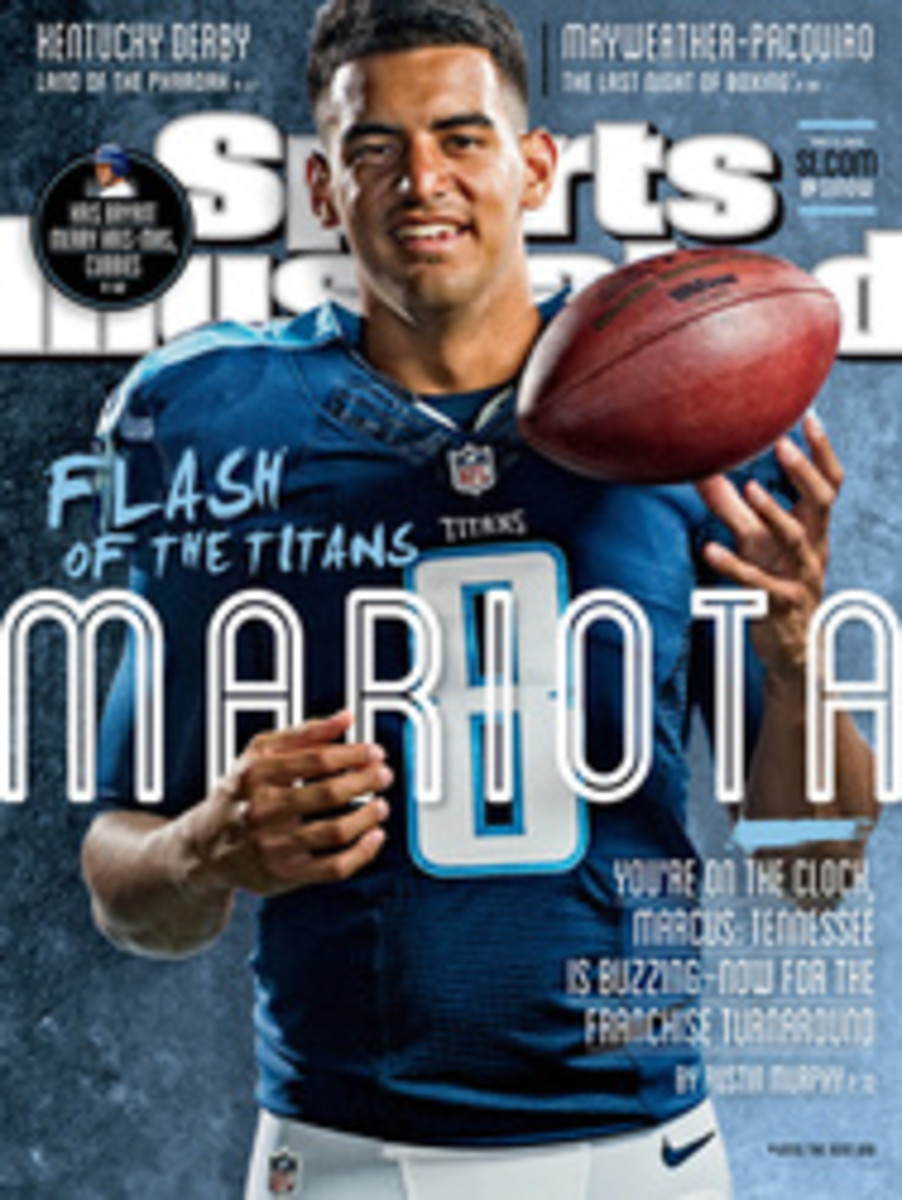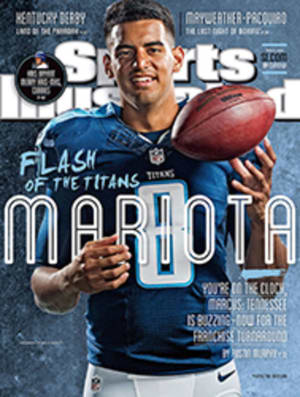
Pain TACTIC
By keeping Ryan Getzlaf and Corey Perry together on their top line, the Ducks are bucking an NHL trend toward spreading out star power. The duo has Anaheim primed for another sweet double: a second Cup
ASK DUCKS CENTER Ryan Getzlaf to name the teammates who have skated on his left side, and he exhales sharply before saying, "Left's a long list." As he rattles off names—Matt Beleskey, Pat Maroon, Kyle Palmieri—it becomes evident that Getzlaf is simply scanning Anaheim's dressing room, reading the nameplates above each stall. "Pretty much every [forward] on our team has been on the left side at some point," he finally says.
The many inhabitants of the left wing on Anaheim's top line don't reflect roster shortcomings or coaching indecision. Rather, this type of lineup chaos is the norm in the modern NHL, where free agency and the constraints of the salary cap have made turnover and line-juggling a way of life. Gone are the days of legendary threesomes such as the Sabres' French Connection (Gilbert Perreault centering Rick Martin and Rene Robert), the Kings' Triple Crown Line (Marcel Dionne, Charlie Simmer, Dave Taylor) and the Canadiens' Dynasty Line (Jacques Lemaire, Guy Lafleur, Steve Shutt)—star combinations that stayed together for years and were as steadfast as they were spectacular. In today's NHL, great lines are defined by pairs: the Penguins' Sidney Crosby and Chris Kunitz; the Capitals' Nicklas Backstrom and Alex Ovechkin; the Stars' Tyler Seguin and Jamie Benn; the Canucks' Henrik and Daniel Sedin. And none are more intimidating than Getzlaf and his longtime right wing, Corey Perry.
Besides the Sedin twins, who in fairness go all the way back to the womb, Getzlaf and Perry are the NHL's most enduring tandem, having played together on the same line since they broke into the league. They made their NHL debuts on the same day and have won Olympic gold together with Team Canada (in 2010 and '14). They won a Stanley Cup in '07, and, as leaders of one of the West's best regular-season teams, they have their sights set on another. Through six postseason games (Anaheim swept the Jets in the first round and jumped to a 2--0 lead over the Flames in the conference semis) Getzlaf and Perry have teamed up in some combination on nine of the Ducks' 25 goals. Perry leads the NHL in postseason scoring, with 13 points. In a 6--1 defeat of Calgary in Game 1 the pair had matching four-point nights. (Getzlaf scored one goal, Perry two.) Perry's last goal came off a no-look dish from Getzlaf on the power play. The winger walked in from the left face-off circle and squeaked a short-side shot past Flames goalie Karri Ramo.
The strength of this two-headed monster—most teams can't match Getzlaf and Perry's imposing combination of speed, finesse and strength—has made it easy for Anaheim to resist the urge to split up the pair. (The off-season trade for Ryan Kesler, which gave the team a true No. 2 center behind Getzlaf, also helped.) The NHL's rigorous 82-game schedule forces teams to roll four lines and conserve top players' minutes to get through a season. Instead of stacking one line with talent, coaches spread out their skill players in a search for balance and depth. "Maybe in today's world the French Connection wouldn't play together," Ducks GM Bob Murray says. "Maybe they'd have split them up to try to make three lines. [But today], when you find chemistry between two people, you keep them together."
THE PAIRING of Getzlaf and Perry almost never happened. Getzlaf, a top prospect in the 2003 draft, went to Anaheim at 19th. Four picks later, with Perry still on the board, then GM Bryan Murray saw an opportunity. Overlooking the 18-year-old Perry's awkward skating because of the scoring touch he had shown with the OHL's London Knights, Murray began making phone calls, offering two second-round picks to move up. He finally found a buyer in Dallas, which had the 28th selection.
In Getzlaf and Perry the Ducks have two big bodies with complementary skills. Getzlaf, 29, is a 6'4", 218-pound playmaker with exquisite vision who can carry the puck with speed through the neutral zone. From there he can usually find the 6'3", 213-pound Perry, a natural scorer with a hard nose and soft hands, somewhere around the crease. They were paired together from the moment they broke into the NHL in the fall of 2005, a union that survived a one-month detour for both players to AHL Portland that December. Their opposing personalities helped ease the transition. The charismatic Getzlaf did interviews, while the reticent Perry remained in the background. "It was pretty evident what [the coaches] were trying to do," says Getzlaf. "It took time, but we definitely developed [together] in a hurry.... They didn't give us a few games."
Anaheim's patience was rewarded in 2007. Starting the playoffs as the nominal fourth line, Getzlaf, Perry and left wing Dustin Penner were keys to the Ducks' Stanley Cup run. The 22-year-old Getzlaf led Anaheim in scoring, with 17 points. Perry tied winger Teemu Selanne and defenseman Chris Pronger with 15. "They were our secondary scoring," Pronger says. "We weren't counting on them. But when they did score, we would usually win."
Over the ensuing years Getzlaf and Perry, who won the Hart Trophy in 2011 after leading the NHL with 50 goals, assumed more responsibility in the dressing room as the veterans from the '07 team drifted away. When Penner returned to Anaheim in '13 after six years with the Oilers and L.A., he saw that his old linemates had matured into leaders. Getzlaf had enough respect from coaches to stop practice and address the team. Perry, so fearless in front of the net, set an example with his toughness. But when coach Bruce Boudreau arrived four years ago, he saw that Getzlaf, the team's captain since 2010, still deferred on the ice to Selanne and the team's other elder statesmen. Selanne retired after last season at age 45, the same time that 39-year-old center Saku Koivu hung up his skates. Only three players from the '06--07 Ducks remain in Anaheim, including Getzlaf and Perry, and it's clear now who the new leaders are.
Boudreau tries to keep pairs together up and down his lineup, but he admits that impatience, and the fear of a losing streak, can force coaches into making abrupt changes. With the Ducks, however, he has stayed relatively steady with Getzlaf and Perry on the top line. "I really believe that Ryan and Corey—it's their team now," Boudreau says. "And quite frankly, we go as they go."
WHERE ONCE they were young players absorbing the culture, Getzlaf and Perry now set the tone in Anaheim. "We've got a lot of young guys," Boudreau says, "and those guys ... look up to [Getzlaf and Perry] like they looked up to Teemu and Saku."
Third-year wingers Emerson Etem and Jakob Silfverberg are tied for third on the team with two playoff goals. Etem, who scored his second in the Game 1 win over the Flames, has occasionally caught himself watching Getzlaf and Perry, marveling at their attention to detail. "They're sitting next to me looking at their [skate blades] at intermission, and I'm sitting here like, What's going on here?" he says.
If the Ducks keep rolling through the playoffs, one thing is certain: Getzlaf will be the first to hoist the Cup. And Perry won't have very long to wait.
8
Picks in the 2003 draft between Getzlaf (No. 19) and Perry (No. 28)
14
Assists for Getzlaf on Perry's 33 goals (42.4%) in 2014--15
504
Goals scored by Perry and Getzlaf since '05--06, 22.6% of the Ducks' total (2,234)
PHOTO
Photograph by Jeff Gross For Sports Illustrated
DUCK DYNASTY Getzlaf (15) and Perry (10)—linemates in Anaheim for nearly a decade—have led their team to a 6--0 postseason start.
PHOTO
RIC TAPIA/ICON SPORTSWIRE
LINE ITEMS Getzlaf (15) and Simon Despres (24) celebrated with Perry after his fourth playoff goal in the Game 1 win over Calgary.

